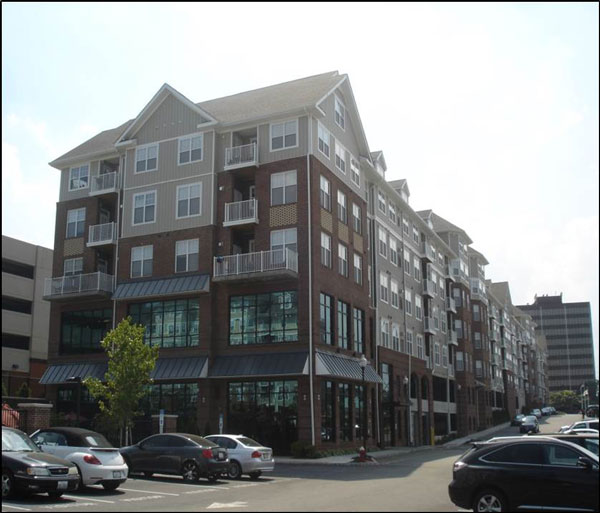
By Jack J. Murphy and Sean DeCrane
What real-time solution will enable fire suppression forces to stay ahead of the construction industry and the ever-changing building systems that will provide first-due fire companies with critical building intelligence to enhance firefighter safety and survival while en route to the incident and beyond? An electronic building information card (eBIC) can provide real-time building intelligence from a communication center, the department’s intelligent operation center (IOC), or a field mobile data device for building intelligence, assessing temporary building conditions, and department field operations guidelines that are beyond the standard operating guidelines (SOGs) to meet the operational needs of a particular structure.
Building intelligence can be divided into three manageable levels of critical data needed during the various phases of fireground operations:
Level-1: Basic Building information for first-due fire companies to initiate operations
1. Address & AKA
2. Building: Height, length, and width
3. Construction type
4. Occupancy type
5. Fire protection systems, and
a. Current fire protection system impairment status
6. Stair access to roof & below grade
7. Elevators: low/mid/high rise banks
8. Alteration/renovation project current status for existing bldgs.
9. Safety & Precautions that are specific to the building as potential threats to firefighters
Level-2: Intermediate: Supplementary building information with more details intended for a strategic response to an incident:
- Field Ops Guidelines specific to building that are above Dept. SOG’s for engine/ladder/rescue operations. (CLICK HERE or below for Value of Fireground Building Intelligence)
Level-3: Comprehensive: The most detailed building information that includes building systems, photographs, etc., as well as individual floor plans.
These three levels of building intelligence is now being considered in the National Fire Protection Association (NFPA) Standard 1620, Standard for Pre-Incident Planning (2014 Edition) for the first-due companies and beyond. Up-front critical building information for fireground operations is the “Last Tactical Mile for Building Intelligence.”
Gallery: Value of Fireground Building Intelligence
Send your feedback to: FMJack1948@gmail.com
Be safe out there.
References:
electronic Building Information Card / eBIC: www.ebicard.com
Coffee Breaking Training, Transforming Your Department’s Response with Electronic Pre-Incident Planning, No. FM–2012-1 April 2, 2012. www.usfa.fema.gov/nfa/coffee-break/.
ICC — International Building Code (IBC/2012 Edition), Section 911.1.5 Building Information Card
ICC — International Fire Code (IFC/2012 Edition), Section 508.1.5 Building Information Card
Firefighter I & II Handbook, Chapter-29, Pre-Incident Planning, Fire Engineering (2009 Edition)
NFPA 1620, Standard for Pre-Incident Planning (2010 Edition). http://www.nfpa.org/searchResults?keywords=1620+standard&pageIndex=1
Insurance Standard Organization (ISO/2013 Edition), Section 580 Training: H. Building
Familiarization for Pre-Incident Planning: http://www.isomitigation.com/ppc/2000/ppc2001.html

Jack J. Murphy, MA, (left) is a Fire Marshal (ret.)/Fmr. Deputy Chief and currently serves as a Deputy Fire Coordinator for the N.J. Div. of Fire Safety for the Bergen Region. He is the Chairman of the New York City High-Rise Fire Safety Directors Assoc., a member of the NFPA High-Rise Building Safety Advisory and 1620-Pre-Incident Planning Committees. He has published various fire service articles and authored: RICS; Rapid Incident Command System Field Handbooks; the “Pre-Incident Planning” Chapter-29 of the Fire Engineering’s Handbook for Firefighter I & II; and co-authored, “Bridging the Gap: Fire Safety and Green Buildings.” He is a Fire Engineering contributing editor, an FDIC executive advisory board member, co-hosts Taming the Fire Environment on the Fire Engineering website and he has received the 2012 Fire Engineering Tom Brennan Lifetime Achievement Award.
Sean P. DeCrane, (right) is a 23+ year veteran of the Cleveland Fire Department. He currently serves as a Battalion Chief and Chief of Training for the Cleveland Fire Training Academy. Sean is a State of Ohio Certified Instructor and represents the International Association of Fire Fighters in the International Code Council. He also has served on the 2009 and 2012 International Fire Code Development Committees and is the current Committee Chair for the 2015 Edition. He was awarded the 2010 ICC Fire Service Award and the 2013 IAFC Fire Life Safety Section’s Fire Service Award. DeCrane also serves on the NFPA 1 Fire Code Technical Committee. In addition, Sean serves on the Underwriters Laboratories Fire Council, the United States Fire Administration’s Residential Fire Environment Workshop Project, the United States Fire Administration’s project on Fire Fighting Tactics in Wood-Frame Residential Construction and the Modern Fire Environment Education Committee. He is a contributor for Fire Engineering Magazine and co-hosts Taming the Fire Environment on the Fire Engineering Web site.

